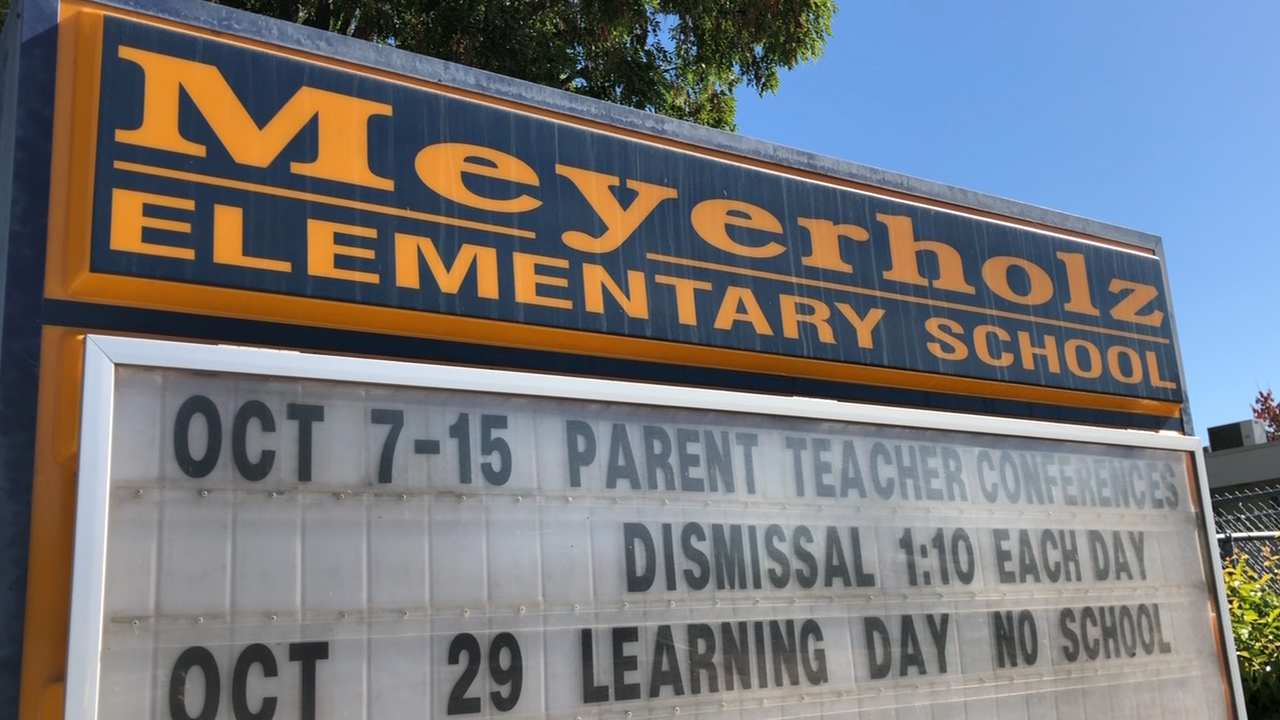
Meyerholz and Regnart Elementary Schools Close After Oct. 14 Town Hall Decision
 By Joseph Shan and Judy Zeng
By Joseph Shan and Judy Zeng
On Oct. 14, 2021, the Cupertino Union School District (CUSD) Board of Education decided to close Meyerholz and Regnart and consolidate John Muir starting in the fall of 2022. The two schools will be leased, providing the opportunity for potential re-openings or repurposing.
Students attending or planning to attend each school in the 2022-23 school year will be redirected to other CUSD schools; John Muir students will transfer to Dilworth or Blue Hills, Regnart students can choose between Lincoln or Blue Hills, and Meyerholz students can choose between Dilworth, Eaton, or Blue Hills. These decisions were approved by the CUSD board on Oct 14. town hall meeting, which ran until past midnight.
Families of Meyerholz elementary school were deeply upset by the rapid decisions of the school board. On Oct. 10, four days before the town hall meeting, Aegean Lee, an educator and resident of the Meyerholz district, led a small protest on the Meyerholz campus. The board had first announced this proposal on Sept. 21, without any prior notice, upsetting residents.
“We were so surprised and shocked because there was no data, no meeting, no report or proposals or anything about [the] school closure,” says Lee. “Compared to last year, the school board is more firm, much more firm, and they don’t give us enough time to speak out.”
In addition, the board agreed to other recommendations for the continual supervision of schools. The district will monitor middle school enrollments until 2026, forming a committee for consideration of school closure if student enrollment falls below 700. The Cupertino Language Immersion Program (CLIP) will be moved to John Muir, forming an alternative school. The Muir YCC and Muir Cuperdoodle programs will remain on the John Muir campus.
LOW ENROLLMENT—The main factor contributing to the school closures was falling enrollment. The three schools have had declining enrollment for 6 years, resulting in a net loss of around 5,000 students since the 2015-2016 school year and enrollment is expected to continue to decline.
There are several reasons for this trend. One is that people are settling down more permanently in the Bay Area, reducing the influx of new residents, meaning there are fewer children over time as the families get older. New, younger families are also finding it harder to move in due to the high housing and living costs in California. In addition, California birth rates have dropped since 2007, especially for younger women. People tend to have children when married and live independently, something that is difficult to do in California because of the high costs. These factors were the basis of the declining student enrollment in Cupertino elementary schools, leading to school closures.
Parents worry about how the new decision will impact student-teacher relationships. Board member Phyllis Vogel acknowledged these concerns, saying, “One thing we’ve heard a lot…is how much students will miss their teachers…[I hope that teachers will be able to] follow their kids.”
FINANCIAL ISSUES—Due to financial issues, an alternative plan was proposed earlier this year to increase the funding of those schools. This plan, called Measure A, would have funded the now-closed schools by raising the parcel tax from $250 to $398 but did not pass.
California’s state government has historically underfunded its schools, with the state being one of the lowest spenders among all states. CUSD, in particular, is in the bottom 3% for funding of school districts in California.
MOVING FORWARD—In spite of recent parent protests, the decision to close schools has already been made, and the next step for the board is ensuring a smooth school transition for the students affected. CUSD board members hope that the arrived solution will both appease parents and provide a better educational environment for students.
